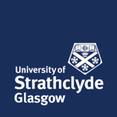|
Capital Cost
The capital costs for the district heating network in Kinlochleven were found through estimates from associated companies that produce and sell the components that are needed for the scheme. The components range from the pipe network, heat connection and thermal stores, and these are shown in the following chart. The capital cost also includes the installation costs. A miscellaneous cost was incorporated into the analysis to account for features such as the metering and sensors for the system, at 10% of the capital cost. The total capital cost came to £3.41 million |
Capital Cost of District Heating Network
|
|
1. Charge of Heat Provided by Network
As the network would be providing a new form of delivering heat to the community, it was important to price it as competitively as possible. A review of literature and the charges applied to heat networks of similar size, specified by the Department of Energy and Climate Change was done. The government provides a range of reviews on pricing and the associated costs of this technology being newly implemented in the UK. The report outlines the rates of heating in the UK to be between 4.6 p/kWh to 7.2 p/kWh. For the community of Kinlochleven, 5.5p/kWh could be a competitive rate, when taking into consideration the efficiency of the different heat sources being currently exploited. Additionally, this rate would enable the community to continue to sustain the system in the long-term. |
Cost of Fuels Used by the Community
|

|
The Heat Network Investment Project has been established with funds of £320m funding being provided to cover the capital costs of developing Heat Networks in Britain.
Most recent activities include Sheffield District Energy Network development which received £5.73m (£2.23m grant, £3.5m loan) Click here to find out more about the Heat Network Investment Project
|
|
Climate Challenge Funding (CCF)
Annual grant of £150k available for community-led projects. Currently combined expenditure £9.97m for 113 projects in Scotland Click here to find out more about the Climate Challenge Funding
|
|
District Heating Loan offers loans of up to £500k and low interest, 3.14% and a payback period of either 10 years or 15 years.
Click here to find out more about the Energy Saving Trust, District Heating Loan
|
|
Feed-In-Tariffs schemes is a Government program designed to encourage uptake of a range of small-scale renewable and low-carbon electricity generation technologies.
The FITs provide three separate financial benefits. One would be a generation tariff, which is based on the total electricity generated and the type of energy. An export tariff payment, which is for any energy export made when generating more than you use and lower bills from your supplier for the electricity that is being important from them. Click here to find out more about the Feed-In-Tariffs
|
